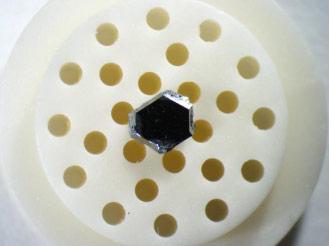A new type of metal is now even more anomalous

Metals come in various flavors: heavy-fermions metals, half-metals, semimetals, strange metals, and others. There are also distinctions within each family. Recently, physicists have used topology, a branch of mathematics, to distinguish between various kinds of semimetals: Dirac semimetals, Weyl semimetals type I, Weyl semimetals type II, nodal line semimetals, nodal ring semimetals, and the list oes on. But various topological categories imply various kinds of physical properties, which physicists are actively studying, both experimentally and theoretically.
The compound Co3Sn2S2 for example is known as a ferromagnetic Weyl semimetal. The topological features of this material lead to a large anomalous Hall conductivity, an anomalous Nernst Hall effect, a negative magnetoresistance due to a chiral anomaly, an unusually large magneto-optic effect, and an unusual breaking-down of Ohm’s law.
In addition, its magnetic properties are also anomalous. Upon cooling, there is a decrease of magnetization which defies normal expectations for a ferromagnet. Various interpretations have been proposed, such as an antiferromagnetic phase, a spin glass, or a domain wall transition, but some of these proposals have been challenged by experiments
The groups of Professor Taufour and Professor Zhu recently combined their expertise to show that the anomaly originates from the depinning of domain walls rather than a phase transition (https://dx.doi.org/10.1088/1361-648X/aca57b). Graduate student Zihao Shen grew high quality single crystals of Co3Sn2S2, and measured the magnetization under various temperature and magnetic field conditions. Together with graduate student Rahim Ullah, they identified a substantial change in the shape of the hysteresis loops which had not been reported previously. They interpreted their results as originating from a domain wall depinning effect. Using the zero area Sagnac interferometry microscope (ZASIM) recently developed by Professor Zhu’s group (https://doi.org/10.1063/5.0042574), they were able to directly observe the magnetic domains and confirm their hypothesis.
Why this domain depinning occurs remains a mystery: these new topological materials still hold many secrets!
Published: August 10, 2023, 11:05 am
